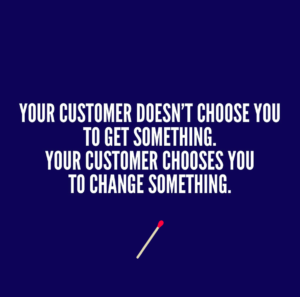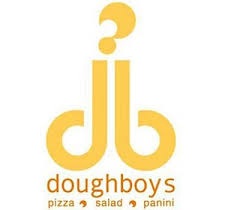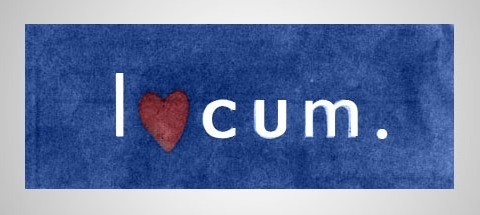By
Mark DiMassimo | 05/24/2021 | in
We have developed, tested and proven a single core model for building positive behavior change marketing brands and businesses.
Our results show that applying this model can improve return on marketing spend by up to 10x and more.
The 3Ms Model for Behavior Change Marketing
MOTIVATION and MOMENTUM in the MOMENTS that matter
The 3Ms model says that you build a behavior change brand by combining Motivation x Momentum in the Moments that Matter. So, let’s break it down.
Motivation comes from meaning or why you want to do a thing. The more motivated you are to do something, the more likely you are to do it.
Momentum is the energy for moving forward in a given moment, and in that moment, there must be a trigger to action, and that trigger to action needs to be easy. Easy to see, easy to comprehend, easy to achieve. But ease is not enough for optimal results. Inner momentum must be activated as well.
Moments that Matter are the decision points along the journey that make all the difference. It makes sense to find the bottlenecks and use behavior change marketing to blast them wide open.
Why one core model?
As an expert marketer, you already bring a wealth of models to building brands and revenues. While much of what you know will be applicable, there are crucial differences in building a brand that people choose to change their lives by changing their behavior.
Building a brand for behavior change is simply different.
While differentiation matters most in building a brand, motivation is essential in building a behavior change brand.
When we want to change behavior—say, to get fit, lose weight or do more deep work—we tend to focus on motivation, so having the brand enhance motivation at each key decision point is essential.
Yet, there’s something even more important than motivation. Momentum matters even more.
Making it easy to do a thing works better than making it matter more. If you want to change something, find the key behavior and use your design brain to make it easier to do.
If you are doing it for yourself, it works this way:
- To drink more water, put the glass of water by your bed at night.
- To get on a regular sleep schedule, leave your alarm clock (or phone) across the room.
- To eat healthier, put the healthy foods at eye-level in your pantry or fridge.
If you are doing it to improve your marketing results and your customer, client or member success, then design momentum into your key touchpoints.
Designing in “ease” isn’t enough. Inner momentum is more than just ease. It’s activating the fast-thinking brain. Behavioral science and marketing testing have uncovered hundreds of ingenious ways to do this, each of which can add significant value.
At DiGo, we’re using the 3Ms Model of Behavior Change Marketing to build the brands and businesses that help people, organizations and communities thrive. If that’s you, let’s talk!
By
Mark DiMassimo | 10/08/2020 | in

Warby Parker doesn’t sell eyeglasses.
Warby Parker sells a behavior change – a different way to buy eyeglasses.
Peloton Interactive doesn’t sell an exercise bike.
Peloton sells a behavior change – a way to make sure you exercise and keep exercising, no excuses.
Airbnb doesn’t sell rooms and apartments.
Airbnb sells a behavior change – a different way to travel.
Uber doesn’t sell rides.
Uber sells behavior change – a different way to get from here to there and a different way to earn a living too.
Dollar Shave Club doesn’t sell razors.
Dollar shave club sells a behavior change – a different way to buy razors.
HelloFresh doesn’t sell meal kits.
HelloFresh sells a behavior change – a way to make home cooking fit modern life.
Sun Basket doesn’t sell meal kits.
SunBasket sells a behavior change – a way to cook Paleo or Whole30 or Vegan…
Stitch Fix doesn’t sell clothes.
StitchFix sells behavior change – a totally different way to get yourself dressed.
If you’re in the direct-to-consumer business, you’re a behavior change marketer. Period.
Your customer doesn’t choose you to get something.
Your customer chooses you to change something.
You are in behavior change marketing.
Branding for behavior change is different.
Designing for behavior change is different.
Content for behavior change is different.
Advertising for behavior change is different.
Marketing for behavior change is different.
By
Mark DiMassimo | 10/06/2020 | in
 “We can’t solve your problem because we haven’t done our strategic work yet.”
“We can’t solve your problem because we haven’t done our strategic work yet.”
When I worked at other agencies, I always thought this to be the ultimate bureaucratic blindness.
Building the BRAND While We Build The BUSINESS.
This is the core promise of our agency, DiMassimo Goldstein. This is the experience our clients have bought when they’ve bought us.
Not: “First we’ll build the brand, then we’ll build the business.”
Not: “First we’ll build the business, then we’ll build the brand.”
Instead, we do both, and simultaneously. Like you do!
Sometimes this translates as “Building the brand while lowering the cost of acquisition.” Sometimes it’s “Building the brand while driving sales efficiency.”
Sometimes it’s just “Growing the business and the brand.”
Our clients never wait months to see returns from an agency engagement. We typically deliver measurable revenue within the first 30 days, and we don’t have to sacrifice future success to do it.
We call it two-track planning, and it’s implemented in everything we do. Imagine two columns on a page, the left titled URGENT and the right titled IMPORTANT.
Some urgent things are truly unimportant, but some we term “The Runway.” The board meeting coming up. The quarterly results reporting. The partner’s meeting.
If a plane doesn’t get aloft by the end of the runway, it doesn’t matter how good the food service and the movie was going to be. There are things you just need in the short run to make the long run possible. Often these things include results. That’s the Runway.
And, we don’t lose our strategic heads. We see the long-term opportunities in urgent problems. We see growth in behavior change.
And we manage them both, so that our clients can move forward, paying for tomorrow’s opportunities with today’s wins, all while strategically planting the seeds that ensure growth for the future in a time-starved world.
Yes, we build the brand. Yes, we build the identity and design the brand. Yes, we develop a theory of growth and build out a marketing plan. Yes, we develop advertising and content. Yet, we view all of this through a Behavior Change Marketing lens.
In short, behavior is where brand and business meet. Until someone acts, nothing changes. Until behavior changes, businesses don’t grow. Behavior is the intersection of meaning and emotion.
Every KPI in a business is driven by a Key Behavioral Indicator. Behavior drives results.
By keeping our eye on the behavior and the result, we see eye to eye with our clients as we accelerate value creation for the business.
By
Mark DiMassimo | 10/06/2020 | in
Your name and your logo are the essential seeds of your brand identity. No brand strategy can really get off the ground without these essential elements of identity. Start-ups need to build the brand foundation to power the growth-stage company they will one day be.
Your brand is your most powerful behavior change tool. If you’re disrupting a category, building a new one, promoting a new way of doing things, building subscriptions, memberships, community or a habit, then you’re in the business of behavior change.
Branding for behavior change is different. It’s tools for the present and tools for the long road, for each stage of the customer journey.
That said, it hard for me to imagine “no logo.”
Of course, the company will have a name. If the company has a name, you will need to represent the name in some way. Anyway you choose to represent the name will appear as “the logo.”
If you don’t designate a way of representing the name then you might use whatever typeface you’re working in at any given time to represent the logo.
Apple. Think different.
Nike. Just do it.
DiMassimo Goldstein. Inspiring Action.
This variability will be, in effect, your logo. And, it’s pretty bad.
So, then the question is – what would be worse? A good way to begin to think about this is to think of the strengths of this particular approach to the logo.
For one thing, it’s readable.
An unreadable logo would be worse, especially if the brand wants to stand for clarity, simplicity or ease-of-use.
Apple’s use of the apple icon with the bite out of it isn’t unreadable. We say it’s “iconic” precisely because people look at it and immediately think Apple. Not everyone, of course, but enough people do.
Same goes for Nike’s Swoosh.
The approach to the logo above also has the strength of feeling appropriate for the context it’s in. On the other hand it doesn’t stand out, but blends in.
Kim Kardashian. Nothing to see here.
Blending in is a brand value for some companies, but not for others.
Another thing you can say for the variable Zelig (the Woody Allen character who took on the appearance, dress and behavior of whoever he was with) logo is that it is not especially ugly or stupid or crass or inappropriate.
Diesel. bE sT0oPid
Diesel actually had a successful “Be stupid” campaign. The idea: smart is boring; stupid is more fun. A stupid logo might make sense for them, but would be an absolute disaster for Wells Fargo.
Wells Fargo. sTuPid in LoVE wITh yOUr MoNEy
I would propose that you start out with a good-enough logo.
I started my own company with DiMassimo Inc. as the name, using the Courier typeface that used to be associated with typewritten material. It was the mid 1990s and the world was full of wild, pixelated, digital-influenced type faces, so I thought that Courier said that we didn’t need any flash or pretense – in short, it showed confidence.
It worked well enough until we had a better logo and identity designed.
Apple started as Apple Computer Co. They didn’t have such a great logo.

Microsoft’s first logo was OK…

Amazon’s first logo was no great shakes…

But there is such a thing as a truly awful logo. Some people think Pepsi’s logo is not so great:

Doughboys Pizza has cleaned up its logo since this one. I know what you’re thinking – no, with a designer!

Also, today it’s important to make sure your logo isn’t offensive in and outside your own borders and culture. This one from Locum in Sweden is particularly unfortunate.

I tried hard to confirm this last one because it’s a pretty unbelievable fail. From all I can find it appears real, although it may have been a company holiday card design rather than an all-year logo. The company currently has a more regular typographic mark, which now looks more like I o cum. So, better.
Now, you know a firm with just this specialization, because you know our name and you know our logo.
By
Mark DiMassimo | 10/06/2020 | in
Happy New Year and welcome to 365 Days of AI: Day 2
At DiMassimo Goldstein we’re building the first integrated agency for the age of AI. So, what is “the age of AI,” what does it mean and why should you care?
The authors of Prediction Machines suggest a simple, elegant way to understand artificial intelligence – as “prediction machines.”
Today’s machine learning (a term synonymous with AI) can do tasks that typically take a human being one second or less.
Don’t think of giving an AI a job, think of giving it a task – a task of prediction. Predict whether that thing up ahead is a stop sign. Predict whether this image is a car. Predict whether this sound is the “wake up word.”
Prediction Machines is the best first book on AI you’ll ever read, even if you’ve read a bunch of books on AI. If you’re a results-oriented marketer, this is a great place to start your AI journey. Ajay Agarwal, Joshua Gans and Avi Goldfarb have written a terrific primer that all of us ought to read here at the dawn of the age of AI.
Thanks to John Mayo-Smith for initially turning me onto this great book.
By
Mark DiMassimo | 10/06/2020 | in
Happy New Year and welcome to 365 Days of AI: Day 1
As you may know, at DiMassimo Goldstein we’re building the first agency for the age of AI.
So, what is “the age of AI,” what does it mean and why should you care?
To start to get a sense of just how powerful Artificial Intelligence machine learning powered by machine empathy can be in inspiring action and caring for people, please watch this amazing episode of YouTube‘s “The Age of AI” with Robert Downey Jr.
You’ll see Rana el Kaliouby of Affectiva and Matt McMullen of RealDolls.
Is McMullen the Thomas Edison of AI, or is he the Dr. Frankenstein of AI, or both?
Watch this mind-blowing video episode – you’ll be glad you did! Thanks to Dr. Jeppe R. Stokholm for turning me on to this video, with an assist from Kent Bhupathi. https://lnkd.in/dN8Byuq
By
Mark DiMassimo | 10/06/2020 | in
Congratulations!
Today is your day.
You’re off to great places.
You’re off and away.
Out there, things happen,
And frequently do,
To people as brainy,
And footsy as you.
When things start to happen,
Don’t worry, don’t stew.
Just go right along,
You’ll start happening too.
Just step over things
That stick to your shoe
That weigh down your wings
And mess up your do.
Your briefs should be brief,
Small words straight on through,
No jargon or grief,
Just Why? What? and Who?
Oh, you’ll be of great use
Every word that you say
If you write like Dr. Suess,
And not Seuss, M.B.A.
By
Mark DiMassimo | 10/06/2020 | in
How much do you care about client success?
A hint: If you’re not sacrificing, you don’t care enough.
90% of what we do to help our clients succeed, you will never hear about. We do it because we care. We do it because we are obsessed with client success. We do it because it’s more fun and more inspiring to have successful friends.
There are things we do for which the client should get all the credit. They do. We have a few terrific clients for whom we do exceptional work, but whom we can’t talk about. We don’t.
Everything we do is a collaboration, and the success of the collaboration is the client’s success. A significant part of what we do, we do when the client is between jobs. There is no bill. There is no expectation of future gain. You’ll never hear a word about these services, unless you happen to be one of those clients.
I hear Nordstrom stories and Zappos stories and I think… if only people could hear our stories, they would be even more amazed… but discretion is one of the most important commitments we make to our clients.
Client success isn’t the same as “customer success.” It’s not just about being happy with our product. Client success is client success and fulfillment in career and life.
We are obsessed with client success.









